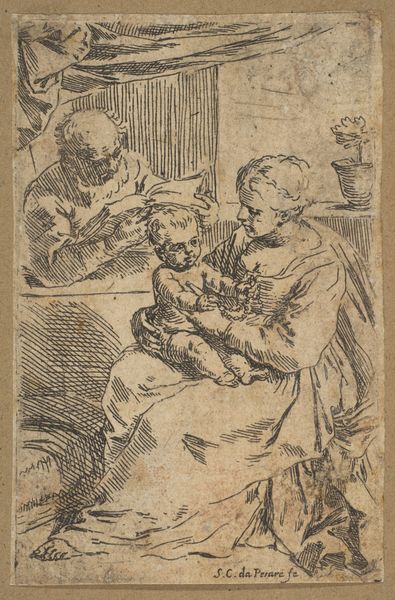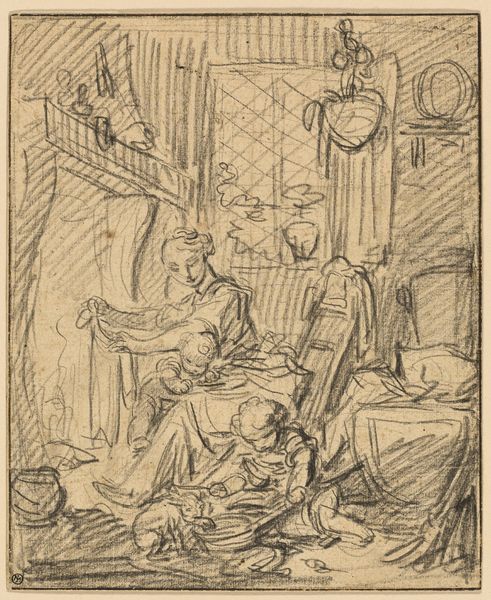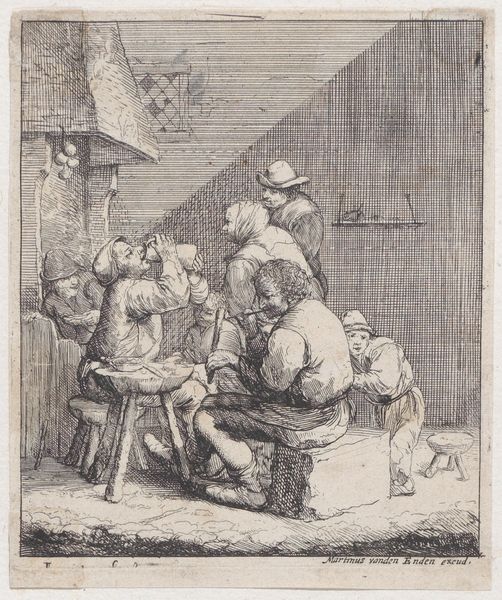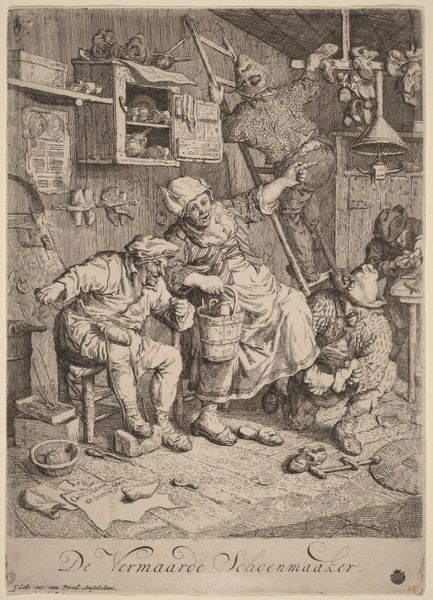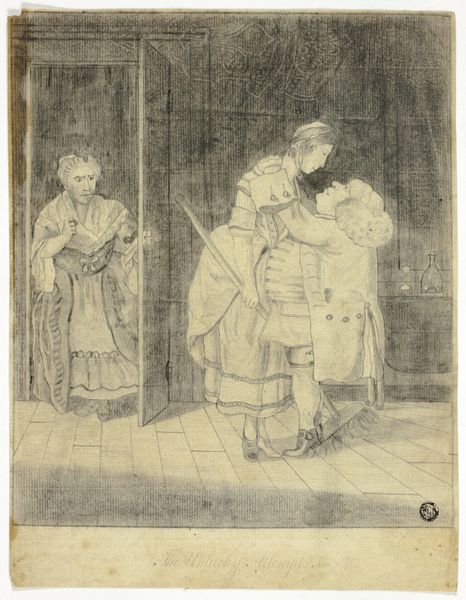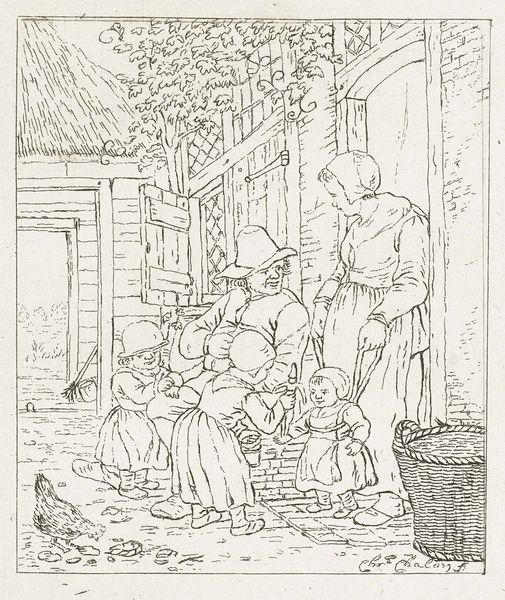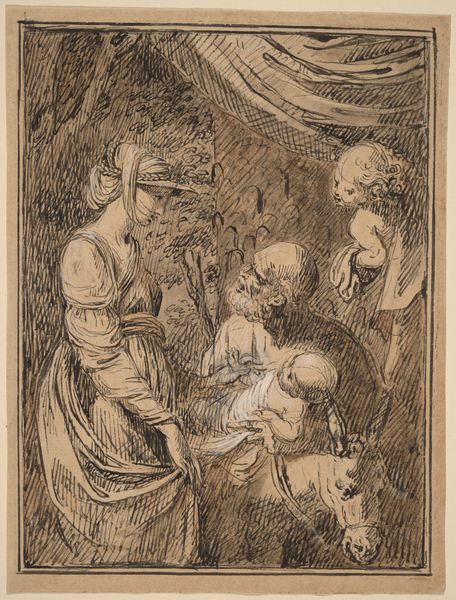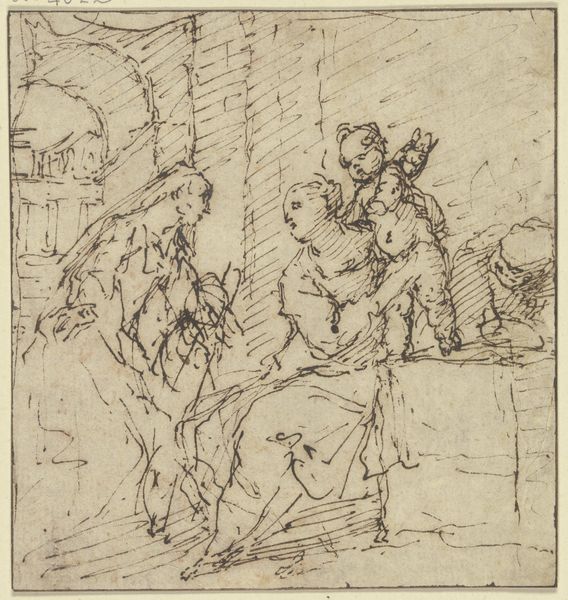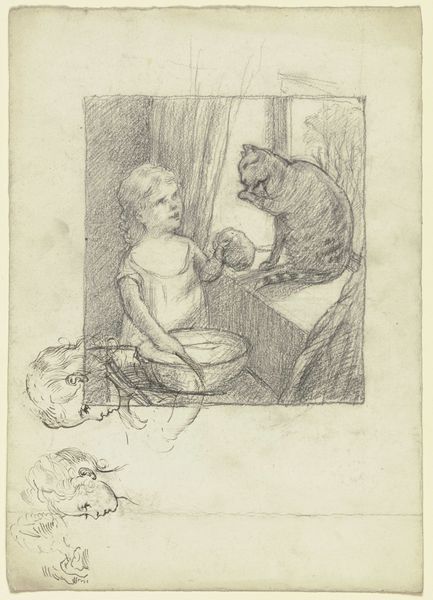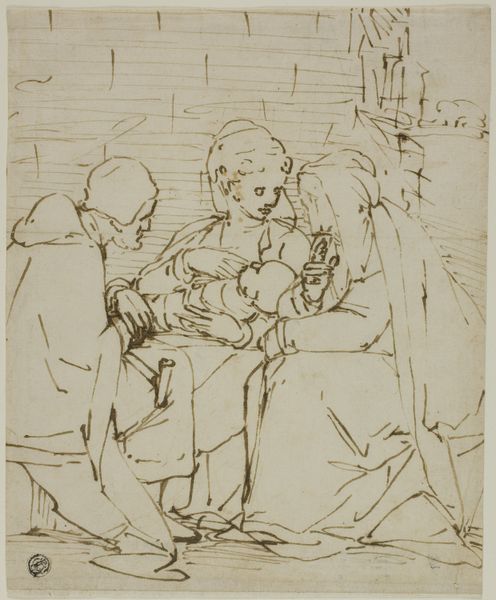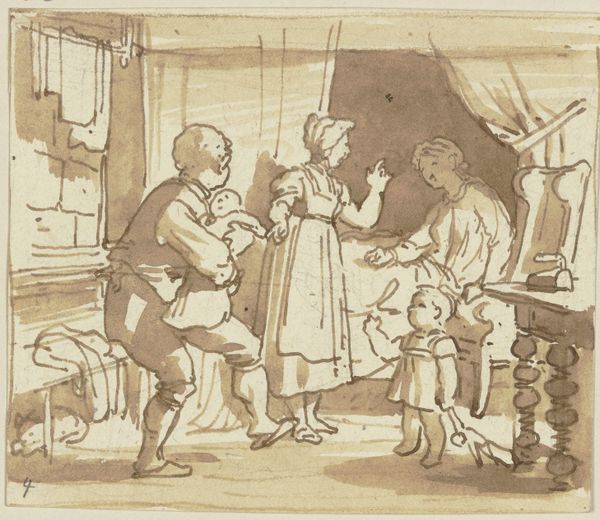
drawing, ink
#
drawing
#
baroque
#
ink
#
genre-painting
Dimensions: 127 mm (height) x 107 mm (width) (bladmaal)
Editor: We’re looking at "En hanrej hos barberen," which roughly translates to "A Cuckold at the Barber's," an ink drawing created sometime between 1595 and 1660 by Giuseppe Caletti. The composition is so busy, full of suggestive characters; there’s almost a sense of contained chaos within the frame. How do you unpack a drawing like this? Curator: Indeed! I think the title already provides a crucial lens. This is not merely a genre scene, but a commentary on male anxiety, perhaps reflecting larger anxieties within early modern European society surrounding infidelity and masculinity. How does the barber function within this narrative? Editor: I see the barber as almost complicit, his grin somewhat unnerving. Is he exploiting the man’s vulnerability in that chair? Curator: Precisely! Think about the social role of barbers in that era. They were privy to gossip, quasi-medical practitioners, and symbols of masculine care, and in this rendering, that role is corrupted. What's fascinating to me is the way the artist implicates us, the viewers. Are we also, in some ways, complicit in this man's humiliation? Editor: That’s unsettling! The woman whispering to the barber also suggests a power dynamic that marginalizes the seated man. The window pane seems to cage him further. Curator: Consider also, who had access to spaces of leisure? It would likely exclude many marginalized people, and instead center on a select, wealthy demographic. What do these social and economic power dynamics communicate in relation to this genre painting’s message? Editor: The drawing reveals that even within privileged spaces, there's vulnerability and precariousness to social status. The artist, through his use of charged glances and cramped positioning, subverts what may appear to be mere social entertainment, into critical, poignant commentary. Curator: Exactly. And it's that intersection of art and social commentary that keeps these pieces alive, encouraging us to continuously reconsider dominant cultural perspectives through a range of intersectional voices.
Comments
No comments
Be the first to comment and join the conversation on the ultimate creative platform.
